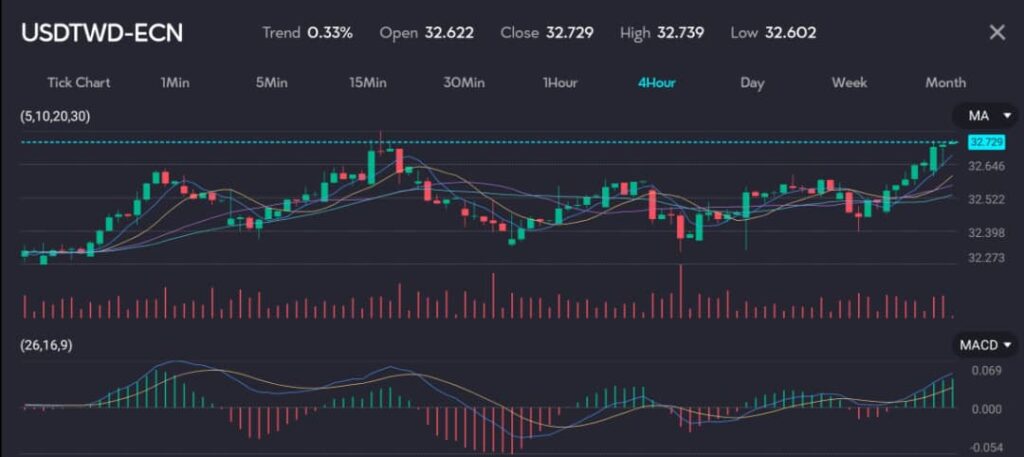Key points
- Taiwanese dollar at lowest since May 2016
- Equities in Taiwan, South Korea slump
- Rupiah at lowest level in more than a week
- Philippine stocks at over three-month high
The Taiwanese dollar fell to its lowest level since May 2016, trading at 32.786 per dollar before settling at 32.762, down 0.5%. This decline was driven by a sell-off in chip stocks and concerns over a possible isolationist shift in U.S. policy if Donald Trump wins the presidency.

See: Taiwanese dollar sees a decline on the VT Markets app.
Taiwan and South Korea equities hit multi-week lows
Equities in Taiwan dropped more than 2%, hitting their lowest level in two weeks, and are poised to lose over 4% this week. This marks the heaviest weekly drop in three months for Taiwan shares. South Korea’s equities, home to chipmaking giants SK Hynix (000660) and Samsung Electronics (005930), fell 1.7%, marking their worst session since late May.
The broader market sentiment was also influenced by the resilient U.S. dollar, with the dollar index (DXY) trading at 104.27 against a basket of major currencies, poised to snap a two-week losing streak.
This resilience, coupled with heightened expectations of a Trump victory, has introduced volatility, particularly for trade-vulnerable currencies like the Taiwanese dollar. Concerns around Taiwan’s export growth outlook also contributed to the currency’s decline.
Indonesian rupiah nears four-year low despite central bank intervention
In Indonesia, the rupiah slipped 0.4% to 16,220 per dollar, its lowest level in more than a week, nearing a four-year low. Despite central bank intervention, the rupiah has lost 5% so far this year.
In other regional markets, Singapore stocks slipped 0.9%, led by declines in banks. However, the Philippine benchmark PSEI rose 1.2%, reaching its highest level since early April. In China, the Shanghai SE Composite index and the yuan remained largely flat after Beijing’s Third Plenum did not provide any concrete stimulus measures.
In Indonesia, the rupiah’s stability will likely depend on ongoing central bank interventions. Regional equities could experience further fluctuations as global trade and political developments unfold. Monitoring geopolitical events and central bank actions will be crucial for making informed investment decisions.
Start trading now — click here to create your live VT Markets account.







